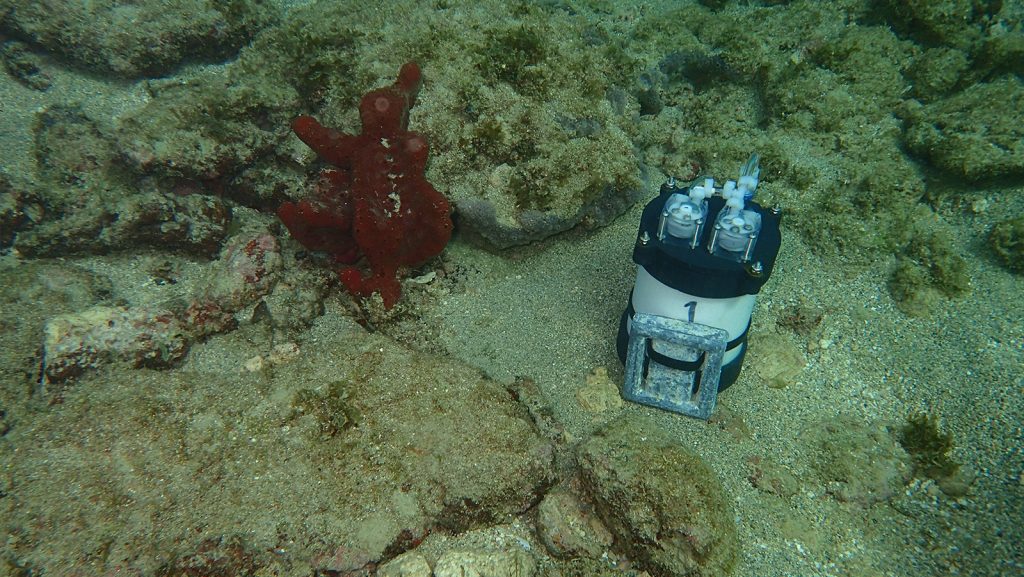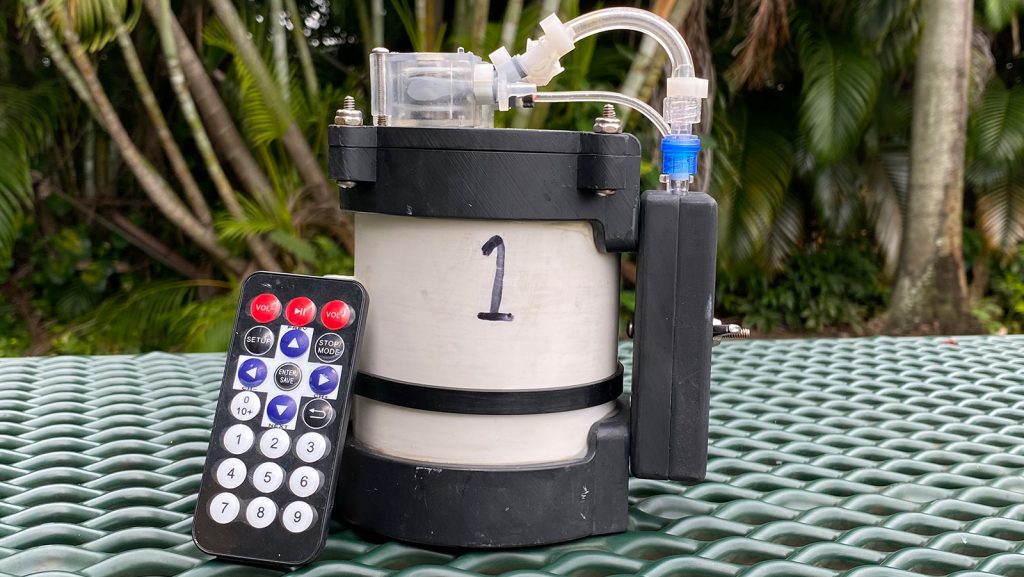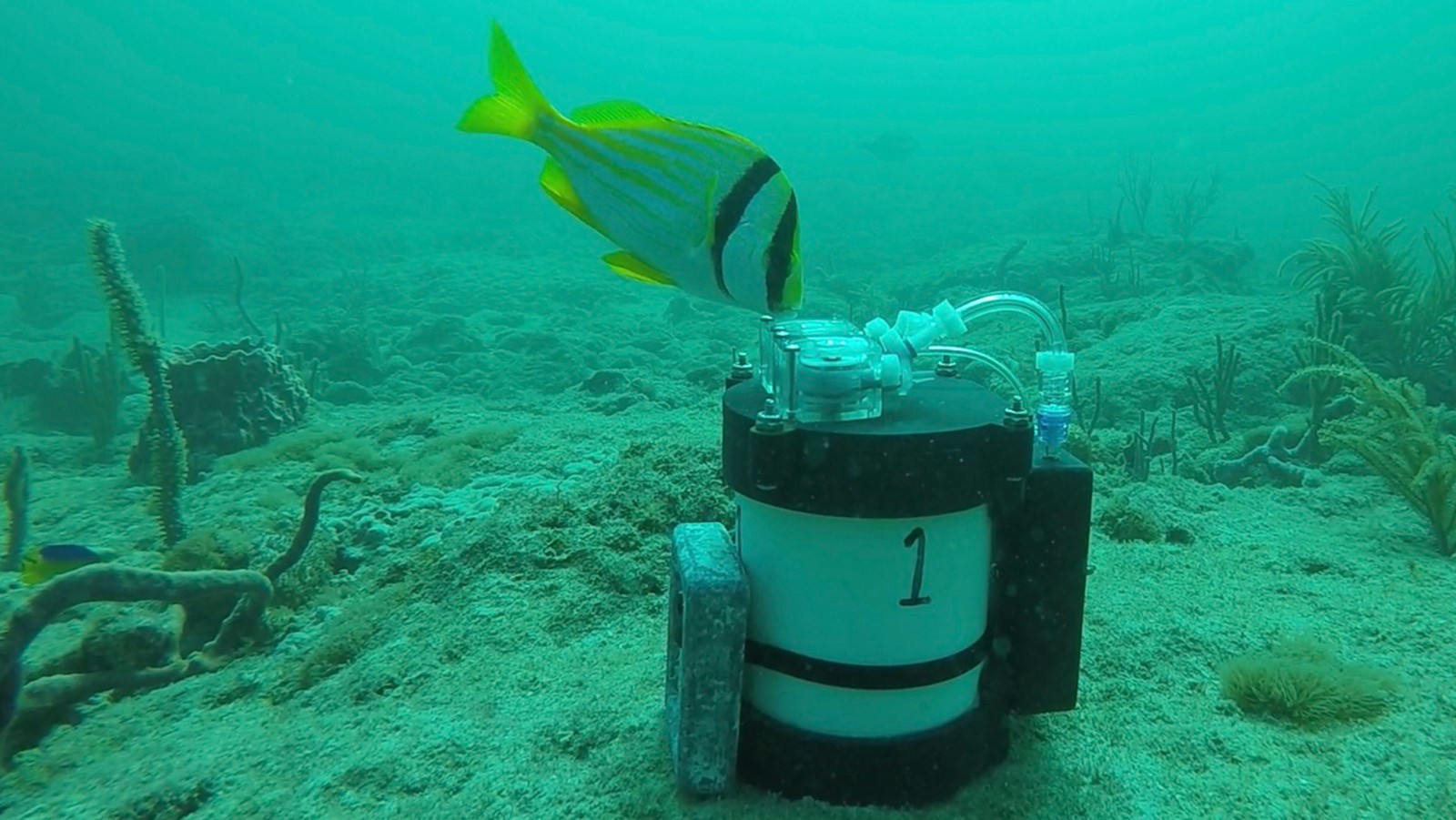Scientists at NOAA’s Atlantic Oceanographic and Meteorological Laboratory (AOML) have engineered a new instrument that will provide valuable information about the biodiversity of aquatic ecosystems. A recently published paper in Hardware X describes the design and creation of a low-cost, open-source sub-surface automated environmental DNA (eDNA) sampler (SASe), for sampling eDNA in the water column.
Building on the success of the Sub-surface Automated Sampler, the first of it’s kind created in 2015, scientists have re-tooled and expanded the original technology to be able to sample eDNA. The SASe filters the water to collect eDNA for lab analysis, preserving the sample at room temperature to keep the DNA (eDNA) from degrading while it sits there waiting to be retrieved.
This is important for Omics work because eDNA must be well preserved in order to extract and identify the DNA present. The SASe allows scientists to collect and preserve a sample without physically being there, reducing the time and resources spent gathering samples in the field.
The SASe represents a milestone for AOML as one of the first pieces of technology to go through a rigorous transition process from the desks of scientists in the laboratory, through organizational approval channels, to the wider scientific community. Anyone from the public can access the instructions to build and use the SASe.
An official SASe “transition plan” was developed and executed that documented the important steps of the transition process, including the project purpose and research background, benefits and impacts, implementation, costs, and alignment with NOAA’s goals and strategic plan. The transition plan served as a road map to ultimately shift the SASe to the public via open-source technology, allowing for a more affordable option for the automatic collection and preservation of eDNA at precise times, weeks, or months in the future.

Sampling of eDNA in seawater allows scientists to non-invasively assess marine biodiversity, detect cryptic or invasive species, and monitor groups of organisms in ways that are more limited through visual surveys.
“The benefit of the SASe, as a low-cost automated eDNA sampling tool, is that researchers can take a more complete snapshot of a site’s biological profile. Replicate SASe units can perform synchronized sampling across and between study sites, as well as collect a temporal suite of samples to better understand our study areas. Time constraints and the inconvenience of retrieving same-day samples is not a concern when using the SASe,” said Nathan Formel, coral ecologist at AOML and CIMAS.

The SASe is waterproof and submersible to 55 meters of depth (40 meters deeper than the 2015 SAS model). It uses a peristaltic pump system to filter a pre-programmable volume of water, up to 2L, and automatically preserves the eDNA sample. Replaceable filters and a low build cost of approximately $280 US dollars (compared to other eDNA samplers that cost more than $100,000) allow for repeated sampling and accessibility to smaller research and biomonitoring groups that may otherwise be financially burdened by more costly eDNA samplers.
The open-source code and design of the SASe make it an instrument that is adaptable for a range of future eDNA research applications, supporting NOAA’s goal to innovate and leverage emerging environmental technology to observe and better understand the ocean and Earth systems. This novel technology resulted from a collaboration between scientists at AOML, the Cooperative Institute for Marine and Atmospheric Studies (CIMAS) at the University of Miami Rosenstiel School of Marine and Atmospheric Science, and the Northern Gulf Institute at Mississippi State University.
The SASe officially transitioned from research within NOAA’s Office of Oceanic and Atmospheric Research or “NOAA Research” to commercialization (open-source) via NOAA’s Technology Partnership Office, making the capability readily available to the eDNA community.
